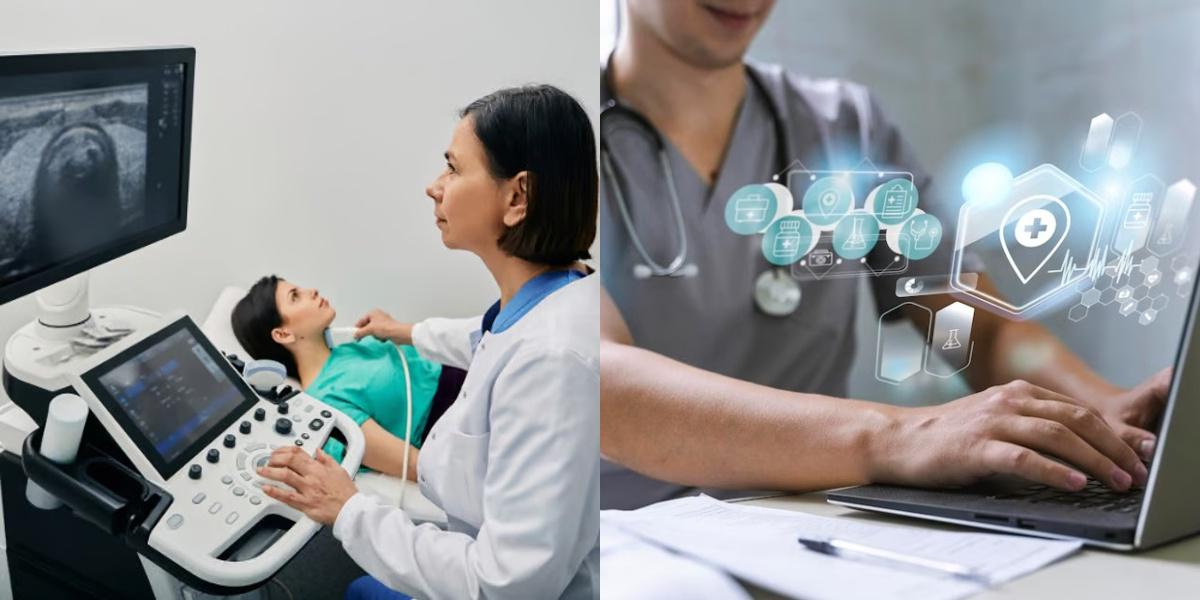Diagnostic Medical Sonographer vs Healthcare Information Technology

In today's rapidly evolving healthcare industry, there are numerous career paths to choose from. Two popular options are Diagnostic Medical Sonography and Healthcare Information Technology. Both fields offer unique opportunities for individuals interested in healthcare, but they differ in terms of job responsibilities, education requirements, and career outlook. In this blog post, we will explore the similarities and differences between these two professions to help you make an informed decision about your career path.
Diagnostic Medical Sonographer vs Healthcare Information Technology: Education and Training
Diagnostic Medical Sonographer
- Education: Most Diagnostic Medical Sonographers have an associate's degree in sonography. Some programs also offer bachelor's degrees in sonography.
- Certification: Many employers prefer or require certification from professional organizations such as the American Registry for Diagnostic Medical Sonography (ARDMS).
- Training: Sonography programs typically include classroom instruction, laboratory work, and clinical experience. Students learn about anatomy, physiology, patient care, and the operation of ultrasound equipment.
Healthcare Information Technology
- Education: Healthcare Information Technology professionals typically have a bachelor's degree in health information management, health informatics, or a related field.
- Certification: While not always required, certification from organizations such as the American Health Information Management Association (AHIMA) can enhance job prospects.
- Training: Health IT programs include coursework in healthcare systems, data management, coding, and health information technology. Students also gain practical experience through internships or clinical rotations.
Diagnostic Medical Sonographer vs Healthcare Information Technology: Career Outlook and Salary
Diagnostic Medical Sonographer
- Career Outlook: The demand for Diagnostic Medical Sonographers is expected to grow rapidly in the coming years. This is primarily due to the aging population and the increased use of ultrasound imaging in healthcare.
- Salary: According to the Bureau of Labor Statistics, the median annual wage for Diagnostic Medical Sonographers was $75,920 as of May 2020. The highest 10 percent earned more than $104,680, while the lowest 10 percent earned less than $52,770.
Healthcare Information Technology
- Career Outlook: The demand for Healthcare Information Technology professionals is also expected to grow significantly. The widespread adoption of electronic health record systems and the need for data analysis in healthcare are driving this demand.
- Salary: According to the Bureau of Labor Statistics, the median annual wage for Health Information Technologists was $42,630 as of May 2020. The highest 10 percent earned more than $72,680, while the lowest 10 percent earned less than $29,940.
Final Thoughts
Choosing a career in the healthcare industry can be both challenging and rewarding. Both Diagnostic Medical Sonography and Healthcare Information Technology offer unique opportunities to contribute to patient care and make a difference in people's lives. It's important to carefully consider your interests, skills, and long-term goals when deciding which path to pursue. Whether you choose to become a Diagnostic Medical Sonographer or a Healthcare Information Technology specialist, you'll have the opportunity to play a crucial role in the healthcare system and make a positive impact on the lives of others.
Explore the reach of Dreambound's program in various locations. Dive into these blogs for an extensive look into the two vocations, including detailed information on their requirements and the process to join:

Stephanie Dayak is the go-to person for everything related to automation and integrations at Dreambound. As a Certified Tax Technician turned tech whiz, her sharp eye for detail and passion for efficiency become evident in every project she undertakes. When not solving tech puzzles, she's out exploring the local food scene, cozying up with her dogs, or plugged into a thought-provoking podcast. She's an ardent believer in mixing fun with functionality!



